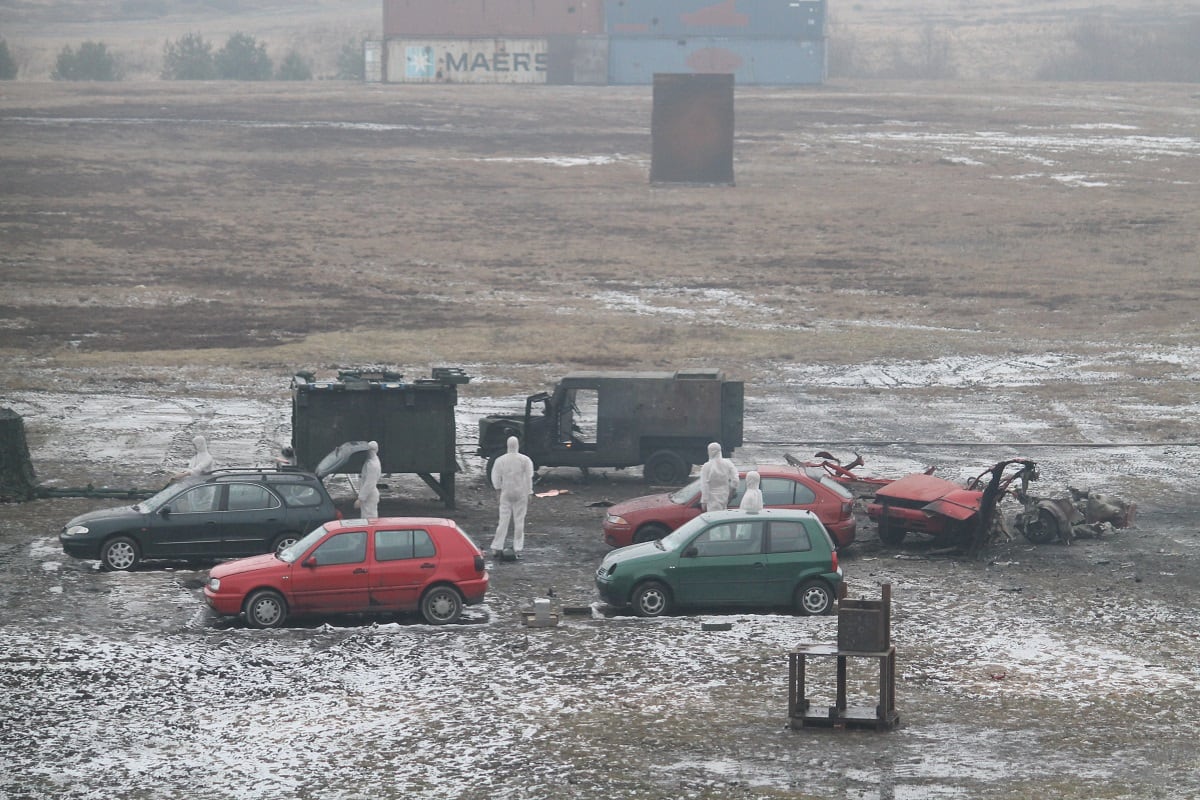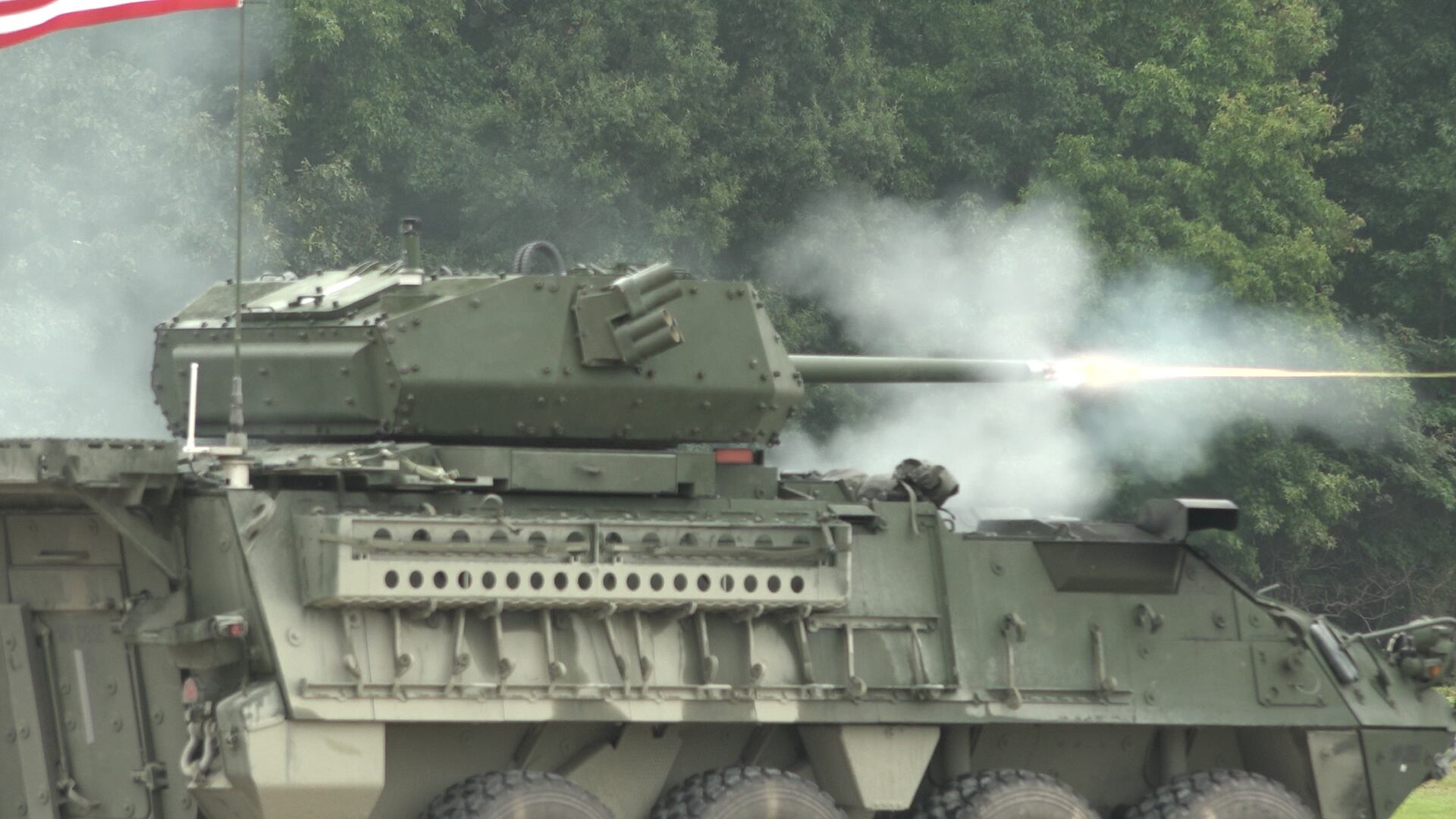PARIS — Rafael is rapidly driving toward a demonstration of a lighter version of its Trophy active protection system, or APS, on a Bradley Fighting Vehicle this summer as the U.S. Army continues to assess APS systems on its combat vehicles, according to Rafael’s head of its land maneuver systems directorate.
The Israeli company has already been chosen to field Trophy on four brigade sets of Abrams tanks, and the U.S. Army continues to analyze two other systems on Bradley and on the Stryker combat vehicle. The Army is qualifying Israeli company IMI System’s Iron Fist on Bradley and the Virginia-based Artis’ Iron Curtain for Stryker.
The characterization efforts for both Bradley and Stryker systems are delayed by roughly six to eight months depending on the system.
Should one or both of them have insufficient performance or maturity, the Army could choose to adapt another system under evaluation to that platform; or the service could assess another nondevelopmental APS system to fit that same role; or furthermore, it could make a decision to move the system from engineering development activity under a science and technology development effort as part of the Vehicle Protection Systems program of record, according to Army spokeswoman Ashley Givens.
There’s also fiscal 2018 funding that will be used to evaluate a fourth nondevelopmental APS system via an installation and characterization activity to be identified after a preliminary evaluation phase that will occur late this year, applying lessons learned from efforts to date, Givens added.
RELATED

So Rafael sees a lighter version of Trophy as a promising candidate for other U.S. combat vehicles, which has advantages such as a large amount commonality with Trophy on Abrams, Rafael’s Michael L. told Defense News in a June 11 interview at the French defense conference Eurosatory. Michael’s last name has been withheld for security reasons.
And the timing seems right, according Michael, as the Army will move toward decisions on APS systems for its combat vehicles at some time this year.
Rafael has been conducting extensive testing of its lighter and smaller Trophy system, and the company is inviting the U.S. military to attend a major test event in August in Israel to witness the capability on a Bradley, which is the combat vehicle considered the most difficult on which to integrate a system because of the current variant’s power limitations.
The company would also be capable of integrating the system onto a Stryker, but it has decided — along with its U.S. partner DRS — to focus on Bradley for the time being, Michael said.
While the current Trophy system would be too heavy, coming in at 1.8 tons as a full system, the lighter version will weigh just shy of half that, while still retaining “the same method of operations, the same logic, the same interface,” Michael said.
Rafael sees the solution not as a simple one, but a high-end one, which it believes would be needed on a platform like Bradley.
Israel and other countries are also calling for a lighter APS system that would work on infantry fighting vehicles, and so Rafael sees “a large business opportunity,” according to Michael.
“In August we are going to surprise a lot of people who weren’t sure,” Michael said, “because when you say shrinking, it’s not just making it smaller. You need to make sure that nothing was lost in the process … we already know that nothing has been lost, but we are testing it to make sure that everything is in order, and I think we have a great solution.”
Rafael is also developing and testing a 30mm weapon station outfitted with Trophy as an all-in-one system, according to Michael.
The turret can be purchased with or without the Trophy system. One customer ― not Israel or the U.S. ― is buying more than a hundred 30mm weapons stations. The company will complete development of the turret in September and will then begin production for the country in January 2019, Michael said.
While the country has yet to commit to adding Trophy as part of a single system, it wanted to prove the system with Trophy.
Rafael is eyeing what happens with the ongoing assessment by the U.S. Army to upgun its Strykers with a 30mm cannon. The assessment of the current configuration is expected to wrap up in the summer.
RELATED

Michael said the company has spoke with the Stryker program office in the U.S. to understand what the soldier wants from a 30mm cannon with the intention to fine-tune an offering should the Army decide to assess other 30mm options in order to outfit the rest of its Stryker fleet.
And to sweeten the deal, the 30mm cannon would come with an APS system already integrated into the turret, according to Michael.
Jen Judson is an award-winning journalist covering land warfare for Defense News. She has also worked for Politico and Inside Defense. She holds a Master of Science degree in journalism from Boston University and a Bachelor of Arts degree from Kenyon College.








